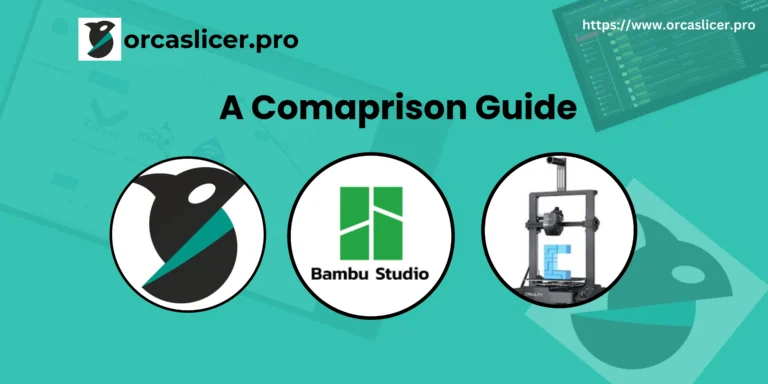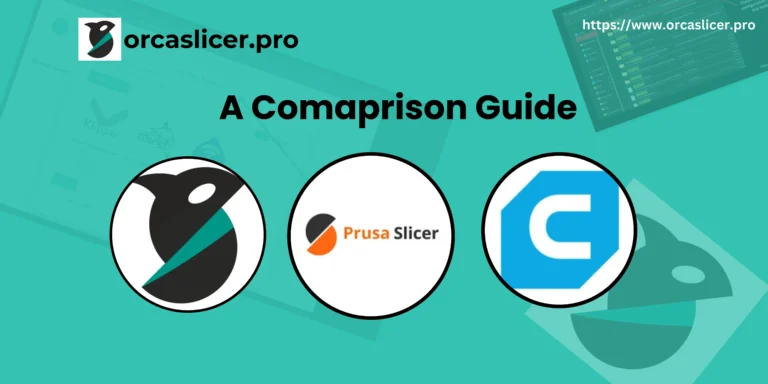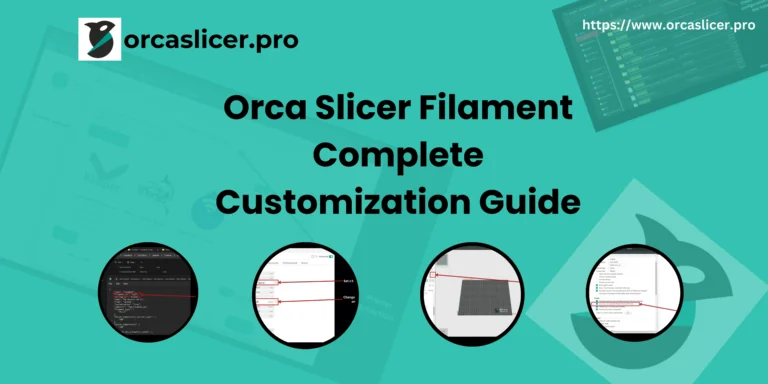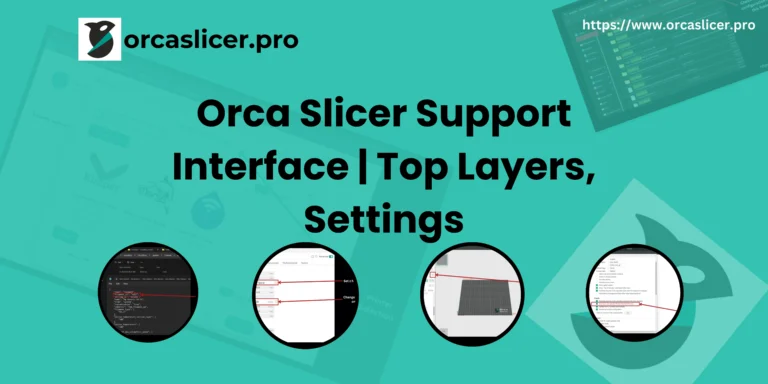Best 3D Printers Compatible with Orca Slicer: A Detailed Guide
Orca Slicer has gained a strong reputation in the 3D printing community due to its advanced features, enhanced slicing engine, and compatibility with Klipper and Marlin firmware. However, the real benefits are unlocked when paired with the right 3D printer. This guide outlines the best 3D printers compatible with Orca Slicer, highlighting their features, firmware support, and slicing performance.
Best 3D Printers Compatible with Orca Slicer
Why Printer Compatibility with Orca Slicer Matters
To get the best results from Orca Slicer, your 3D printer should meet the following criteria:
- Firmware compatibility: Support for Marlin, Klipper, or Bambu Studio flavors
- Preconfigured or community-created profiles
- Ability to handle advanced features like input shaping, pressure advance, mesh bed leveling
- Open-source or modifiable configurations
Orca Slicer Compatible 3D Printers
1. Bambu Lab P1P / P1S / X1 Carbon / X1E
Overview
Orca Slicer is built on Bambu Studio, making Bambu Lab printers a perfect match. The slicer supports all advanced features including live print monitoring, flow rate tuning, ABL control, and seamless wireless printing.

Key Technical Features
- Native Bambu Studio engine support
- Wi-Fi & LAN connectivity
- High-speed core XY kinematics
- Automatic flow and pressure advance calibration
- Active vibration compensation
- Real-time camera monitoring and timelapse
Pros and Cons
| Pros | Cons |
|---|---|
| Native support in Orca Slicer | Expensive for beginners |
| Automatic profile tuning | Limited modifiability compared to DIY printers |
| Exceptional print speed and quality | Proprietary ecosystem |
| Full support for advanced calibration | Limited material profiles outside Bambu ecosystem |

2. Creality K1 / K1 Max
Overview
These printers run Klipper firmware out of the box, making them a strong fit for Orca Slicer. Profiles are available in the slicer by default or through easy imports. Great choice for fast printing with budget constraints.
Key Technical Features
- Klipper firmware with G-code flavor compatibility
- Max speed: 600 mm/s
- Direct drive extruder with ABL
- AI camera (K1 Max)
- Heated chamber in K1 Max
Pros and Cons
| Pros | Cons |
|---|---|
| Fast printing with Klipper firmware | Limited firmware customization compared to Voron |
| Built-in Orca profiles available | AI camera not very reliable |
| Great value for performance | Plastic frame not as rigid as metal builds |
| Works with Orca’s Klipper configuration | May need firmware tweaks for full compatibility |
3. Voron 2.4 / Trident / Switchwire
Overview
The Voron ecosystem is a DIY builder’s paradise, offering full firmware flexibility (Klipper) and customization. Orca Slicer works exceptionally well with Voron printers due to Klipper-native slicing support.
Key Technical Features
- Modular coreXY and bed-slinger designs
- Full support for Pressure Advance, Input Shaping
- High temp compatibility
- Remote web UI and Moonraker integration
- Unlimited tuning and modding possibilities
Pros and Cons
| Pros | Cons |
|---|---|
| Maximum customization with Klipper | Not beginner-friendly |
| Full access to all Orca Slicer features | No factory support (DIY builds only) |
| Excellent community-developed profiles | Requires detailed calibration and setup |
| Superior print quality with tuning | Higher upfront cost for custom builds |
4. Prusa i3 MK3S+ / MK4 / MINI+
Overview
Although Orca Slicer is not officially endorsed by Prusa, its ability to import PrusaSlicer profiles makes it fully usable with these reliable and highly regarded 3D printers.
Key Technical Features
- Marlin-based firmware
- Multi-material upgrades (MMU2S)
- Removable PEI spring steel sheets
- Linear Advance for extruder control
- Excellent mechanical design with silent operation
Pros and Cons
| Pros | Cons |
|---|---|
| High-quality, well-supported hardware | Not natively supported in Orca (manual import needed) |
| Reliable and consistent results | Lower speed compared to Klipper printers |
| Easy to import existing Prusa profiles | Limited slicer-side access to calibration controls |
| Strong documentation and support | No built-in Wi-Fi (except MK4) |
5. Anycubic Kobra 2 / Kobra Max
Overview
Affordable, Marlin-based printers that can be used with Orca Slicer using custom profiles. Manual configuration is required, but the slicer supports Marlin G-code flavor and generic printer profiles.
Key Technical Features
- Marlin firmware with G29 mesh leveling
- Touch auto bed leveling
- Mid-range speed (100–180 mm/s)
- Large print volume (Kobra Max)
- Direct drive extruder
Pros and Cons
| Pros | Cons |
|---|---|
| Affordable and beginner-friendly | Manual profile tuning required |
| Works well with custom Orca configurations | Less accurate motion system |
| Auto bed leveling out-of-box | Limited community-developed profiles |
| Good print quality for price range | Slower print speeds compared to Klipper-based printers |
Setting Up a Custom Printer in Orca Slicer
For unsupported printers, Orca Slicer offers a flexible configuration system:
- Navigate to Printer Settings > Add New Printer
- Select firmware type (Marlin/Klipper)
- Define build volume, nozzle size, speeds, retraction settings
- Tune filament and cooling parameters
- Use Orca’s Calibration Guide to optimize Pressure Advance and flow rate
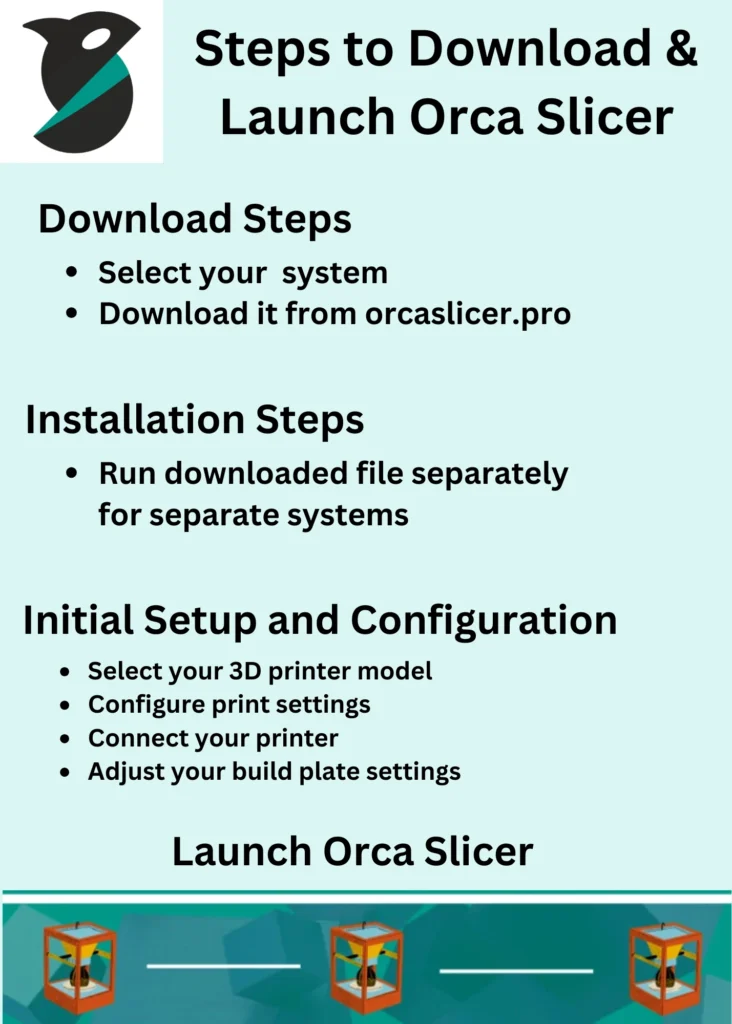
Conclusion
Orca Slicer stands out for its slicing accuracy, advanced calibration tools, and compatibility with both Klipper and Marlin-based printers. Whether you’re using a high-speed Bambu Lab, a flexible Voron, or a budget-friendly Creality, Orca Slicer can elevate your prints with precise control and rich customization.
To explore more:
- Compare Orca Slicer vs Cura vs PrusaSlicer
- Orca Slicer vs Creality Slicer vs Bambu Studio
- Update Orca Slicer
- Check alternatives to Orca Slice
Frequently Asked Questions
Which type of 3D printer is best for beginners?
FDM (Fused Deposition Modeling) 3D printers are best for beginners due to their ease of use, affordability, and wide material compatibility. Popular beginner models include the Creality Ender 3, Anycubic Kobra, and Prusa Mini+
What is the best 3D printer on a budget?
The Orca slicer, Creality Ender 3 V2 and Anycubic Mega S are among the best budget 3D printers under $300. They offer great print quality, large communities for support, and excellent reliability.
What is the most bought 3D printer?
The Creality Ender 3 series is one of the most sold 3D printers globally. Its affordability, open-source compatibility, and extensive upgrade options make it a favorite among hobbyists and beginners alike.
Which 3D printing technology is most popular for beginners?
FDM (Fused Deposition Modeling) is the most popular 3D printing technology for beginners due to its simplicity, cost-effectiveness, and accessibility of filament materials like PLA and PETG.
What is the best 3D printer for beginners?
Top beginner-friendly 3D printers include:
Creality Ender 3 V2
Anycubic Kobra Go
Prusa Mini+
Bambu Lab A1 Mini
These printers are easy to assemble, come with pre-configured profiles, and have excellent community support.
What is the best 3D printer for beginners on Amazon?
On Amazon, the Creality Ender 3 V2 Neo and Anycubic Kobra Neo are top-rated for beginners, offering features like silent printing, auto bed leveling, and quality prints under $300.
What is the best 3D printer for kids?
For children, safety and ease-of-use are priorities. The Toybox 3D Printer, Monoprice Select Mini V2, and FlashForge Finder are designed for kids, with enclosed build areas and simple interfaces.
What’s the best 3D printer for beginners according to Reddit?
Redditors on r/3Dprinting frequently recommend:
Creality Ender 3 series
Orca Slicer
Anycubic Kobra
Users appreciate these for their community support, consistent updates, and high value for money.
What is the Bambu 3D printer known for?
Bambu Lab printers, like the X1-Carbon and P1S, are known for:
Lightning-fast printing speeds (up to 500 mm/s)
Multi-material AMS system
AI-assisted first layer inspection
Minimal setup and calibration time
What is the best 3D printer for a small business?
For small businesses, reliability and print volume matter. Top picks include:
Bambu Lab X1-Carbon – Fast, efficient, multi-color printing.
Prusa MK4 – Open-source, industrial-grade accuracy.
Creality K1 Max – High-speed, large-format prints.
Raise3D E2 – Ideal for prototyping and production.
What is a Prusa 3D printer?
Prusa 3D printers, like the Prusa i3 MK4 and Prusa Mini+, are open-source, highly reliable FDM printers developed by Prusa Research. They are known for:
Exceptional print quality
Auto mesh bed leveling
Modular design for upgrades
Active community and support
What is a Creality 3D printer?
Creality is a leading 3D printer manufacturer, known for budget-friendly, upgradeable models such as the Ender 3, CR-10, and K1 series. Their printers cater to all levels—from hobbyists to small businesses.

